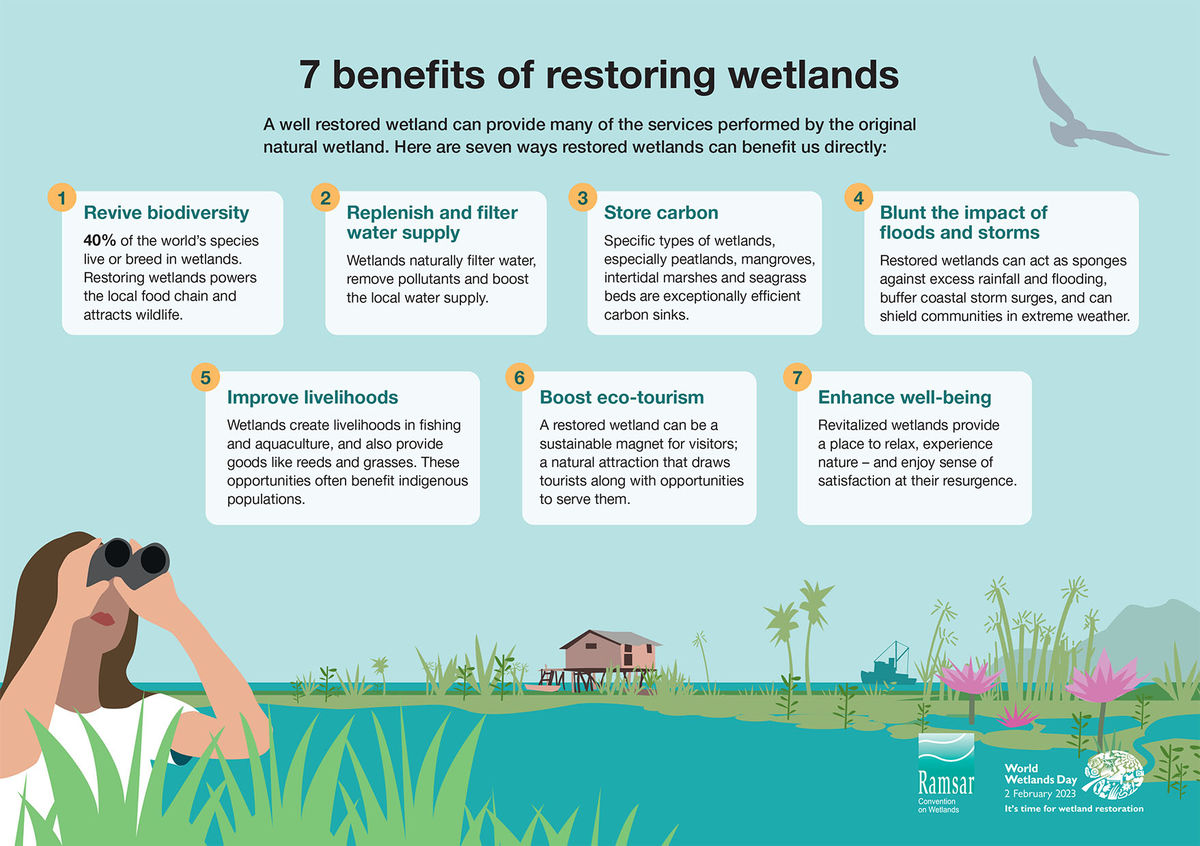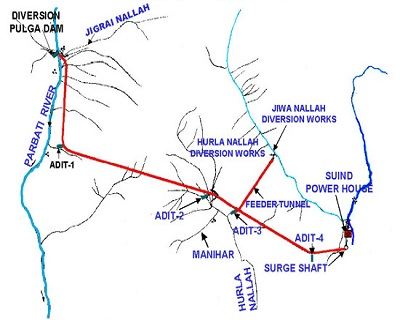Description
 Copyright infringement not intended
Copyright infringement not intended
Picture Courtesy: https://www.downtoearth.org.in/news/water/constructed-wetlands-are-nature-s-ingenious-solution-for-wastewater-treatment-in-india-96014
Context: Constructed wetlands are a natural solution for wastewater treatment, mimicking natural wetlands with plants, soil, and water to purify water.
About Constructed Wetlands
- Constructed wetlands are engineered systems designed to mimic the natural processes of wetlands to treat wastewater. They are composed of specific combinations of soil, plants, and microorganisms that facilitate the breakdown and removal of contaminants from water.
|
Wetlands are areas where land is saturated or covered by water, either permanently or seasonally. They are vital ecosystems that provide a variety of benefits, including water purification, flood control, and habitat for wildlife. There are many different types of wetlands, including marshes, swamps, bogs, and fens. Wetlands can be found all over the world, from the tundra to the tropics.
|
Types of Constructed Wetlands
- Subsurface Flow (SSF) Wetlands: Wastewater flows horizontally through a bed of porous media (such as gravel or sand) planted with wetland vegetation. Microbial activity in the porous media degrades organic pollutants as the water moves through.
- Surface Flow (SF) Wetlands: Water flows across the surface of the wetland, typically featuring shallow ponds or channels with emergent vegetation. Contaminants are removed through physical, chemical, and biological processes as the water interacts with plants and microorganisms.
Components and Processes
- Vegetation: Wetland plants like cattails, bulrushes, and sedges play a crucial role. Roots provide surfaces for beneficial bacteria that break down organic matter. Plants absorb nutrients like nitrogen and phosphorus, reducing their presence in the water.
- Microorganisms: Bacteria, archaea, and fungi in the wetland substrate (soil or gravel) contribute to the biodegradation of pollutants. They convert ammonia into nitrate (a less harmful form of nitrogen) and stabilise phosphorus compounds.
Benefits of Constructed Wetlands
- Cost-Effectiveness: Construction and maintenance costs are often lower compared to conventional treatment methods. Minimal energy consumption and operational expenses make them suitable for resource-limited settings.
- Environmental Benefits: Promote biodiversity by providing habitats for diverse plant and animal species. Contribute to ecosystem services such as flood control, groundwater recharge, and carbon sequestration.
- Versatility and Scalability: Can be customised to treat various types of industrial wastewater based on specific contaminants. Suitable for both centralised (large-scale) and decentralised (small-scale) wastewater treatment.

Examples of Constructed Wetlands in India
- Asola Bhatti Wildlife Sanctuary (Delhi): Utilises a constructed wetland system to treat sewage from nearby settlements while supporting local biodiversity.
- Perungudi and Kodungaiyur (Chennai): Implemented decentralised wastewater treatment using constructed wetlands to reduce pollution levels.
- Kolkata East Wetlands (West Bengal): Ramsar site with a network of natural and constructed wetlands treating wastewater from Kolkata and surrounding areas.
- Palla Village (Haryana): Constructed wetlands treat wastewater from Delhi, improving water quality in the Yamuna River.
- Auroville (Tamil Nadu): International township using decentralised wastewater treatment systems, including constructed wetlands.
Opportunities and Challenges in India
- Policy Frameworks: Clear policies and regulations are needed to incentivize industries to adopt constructed wetlands for wastewater treatment.
- Capacity Building: Enhancing technical expertise among stakeholders (industry professionals, regulators, local communities) is crucial for successful implementation and operation.
- Monitoring and Research: Continuous monitoring and research are essential to optimise design parameters and address emerging challenges (e.g., new contaminants, climate change impacts).
- Community Engagement: Involving local communities in planning, design, and management fosters ownership and ensures the long-term sustainability of constructed wetland projects.

Conclusion
- Constructed wetlands offer a promising, nature-based solution for wastewater treatment in India, leveraging natural processes to remove contaminants and promote environmental sustainability. With supportive policies, capacity-building efforts, and community involvement, constructed wetlands can play a significant role in achieving sustainable industrial progress and preserving water resources for future generations.
Source:
The Hindu
Wikipedia
|
PRACTICE QUESTION
Q. Climate change is expected to have significant impacts on wetland hydrology, vegetation, and species composition. What adap
|
https://t.me/+hJqMV1O0se03Njk9





 Copyright infringement not intended
Copyright infringement not intended










